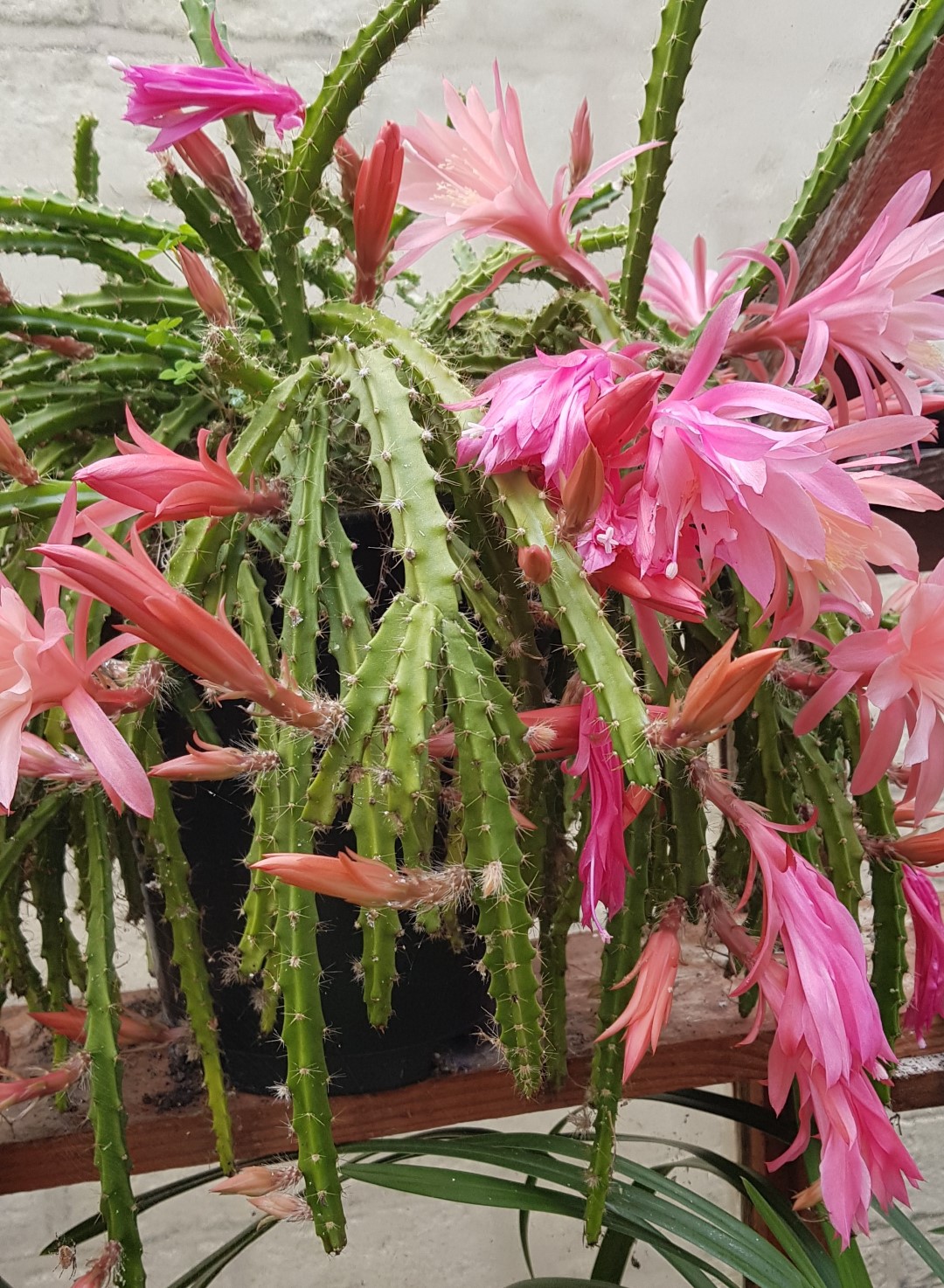I didn't want to hijack Orchid Kid's thread here about Epiphyllum hybrid Deutsches Kaserin:
http://www.orchidboard.com/community...id-cactus.html
so I'm posting this here.
Most Epiphyllum hybrids are fairly large plants. Some have a sprawling habit, but a few are mostly upright. The very easy to grow species Epiphyllum oxypetalum can grow as a vine. I saw one in a 2-story atrium in a pot on the floor, with stems trained up a trellis to the skylights above. But they flower when very much smaller than that.
It is possible to flower any of them in a 6" / 15cm pot, and many in a 4". They take up less space if you lasso upright all the long stems and figure out how to keep the thing from falling over. People have used tomato cages for this purpose.
Their ancestors are all epiphytes, mostly in genera transferred to Epiphyllum and Disocactus, so orchid growers are ahead of the curve when it comes to figuring out potting mixes and watering. They should never dry out completely during the growing season, and in winter should not dry out for long. They do great outdoors under trees in summer for much of the US, but can't handle really hot weather like mine, and they are not frost tolerant.
There are a few Epi hybrids smaller than others. My mom grows the Deutsches Kaiserin shown in this thread outside in near-coastal Southern California in full sun. In a 6" pot is is barely 8" tall, with very thick and hard stem segments that are very upright. It flowers regularly. Grown in more shade in a basket D. K. is a larger, sprawling plant, but not as large as other Epis get.
Somebody who really wants to grow Epis but is worried about space should consider this plant, plus a yellow called Fruehlingsgold (Spring Gold.) This has thin-petalled flowers in profusion in spring, and again in fall. They smell like citrus. It is a hybrid between the species Disocactus macrathus and a complex hybrid. The Diso is a small plant with a profusion of small citrus-scented flowers in midwinter to early spring. It could easily grow alongside orchids. There are other smaller hybrids as well, mostly developed by German hybridizers in the 1930s.
The Christmas cactus, now genus Schlumbergera and hybrids, do very well indoors. But they require one of two things to flower: fall nights in the 50s F / 10C for six weeks, or days under 10 hours for the same six weeks, with not a trace of light at night.
Genus Rhipsalidopsis plants looks very much like Schlumbergera. They flower in Spring and are sometimes called Easter cactus. Their flowers are similarly sized and colored, but they are radially symmetric rather than zygomorphic. Rhipsalidopsis is not sensitive to night length so they bloom reliably in homes. They don't like any hot weather at all, but are fine at usual home temperatures.
Cactus genera have been rearranged drastically. Lots of these are still sold under the old names. If you want to grow the epiphytes look up genera Aporocactus, Deamia, Disocactus, Epiphyllum, Harrissia, Hatiora, Heliocereus, Hylocereus, Lepismium, Pfeifferia, Rhipsalidopsis, Rhipsalis, Schlumbergera, Selenicereus, Weberocereus, Wittia and Zygocactus.

































 Linear Mode
Linear Mode


